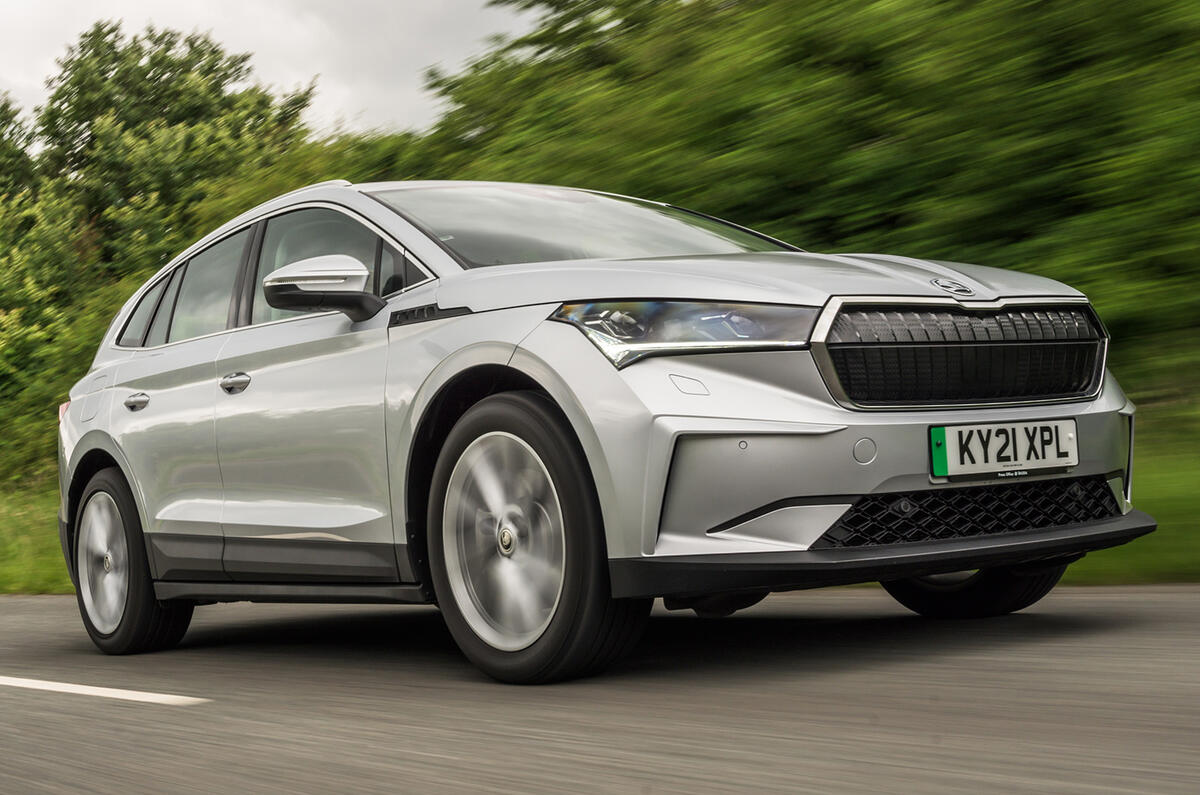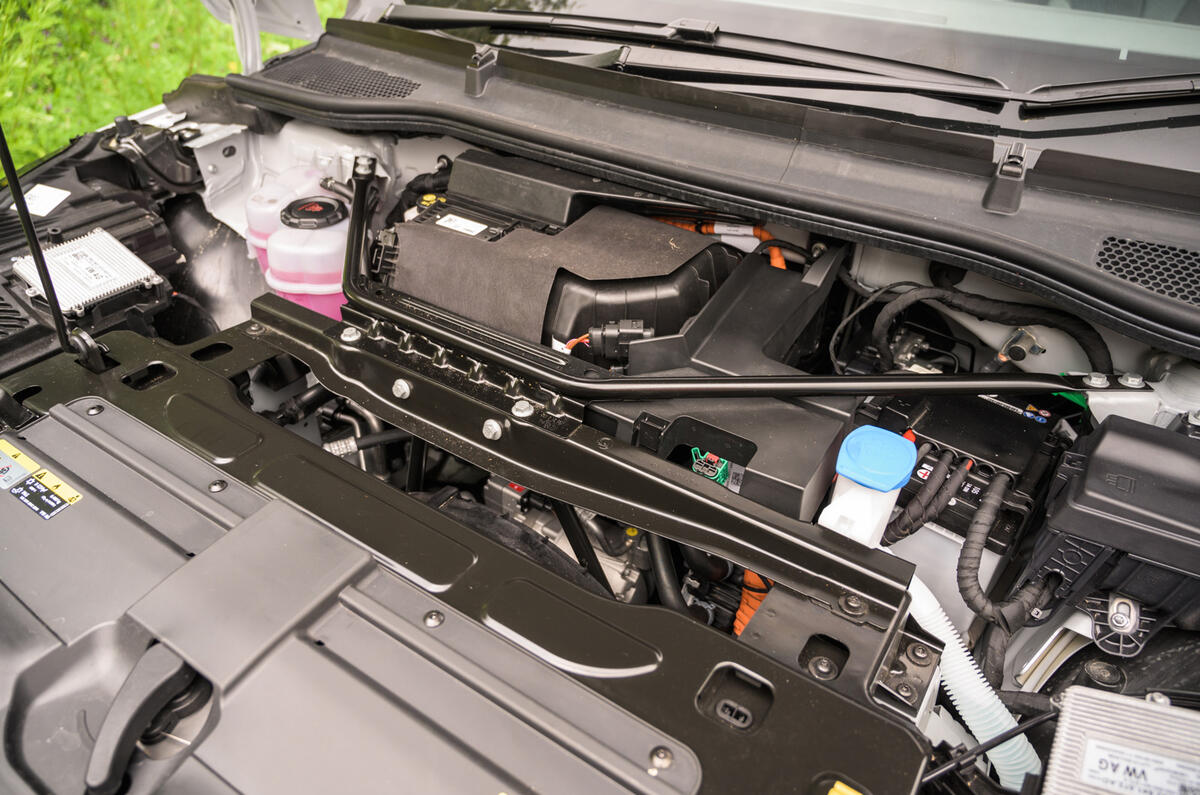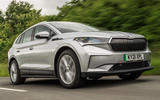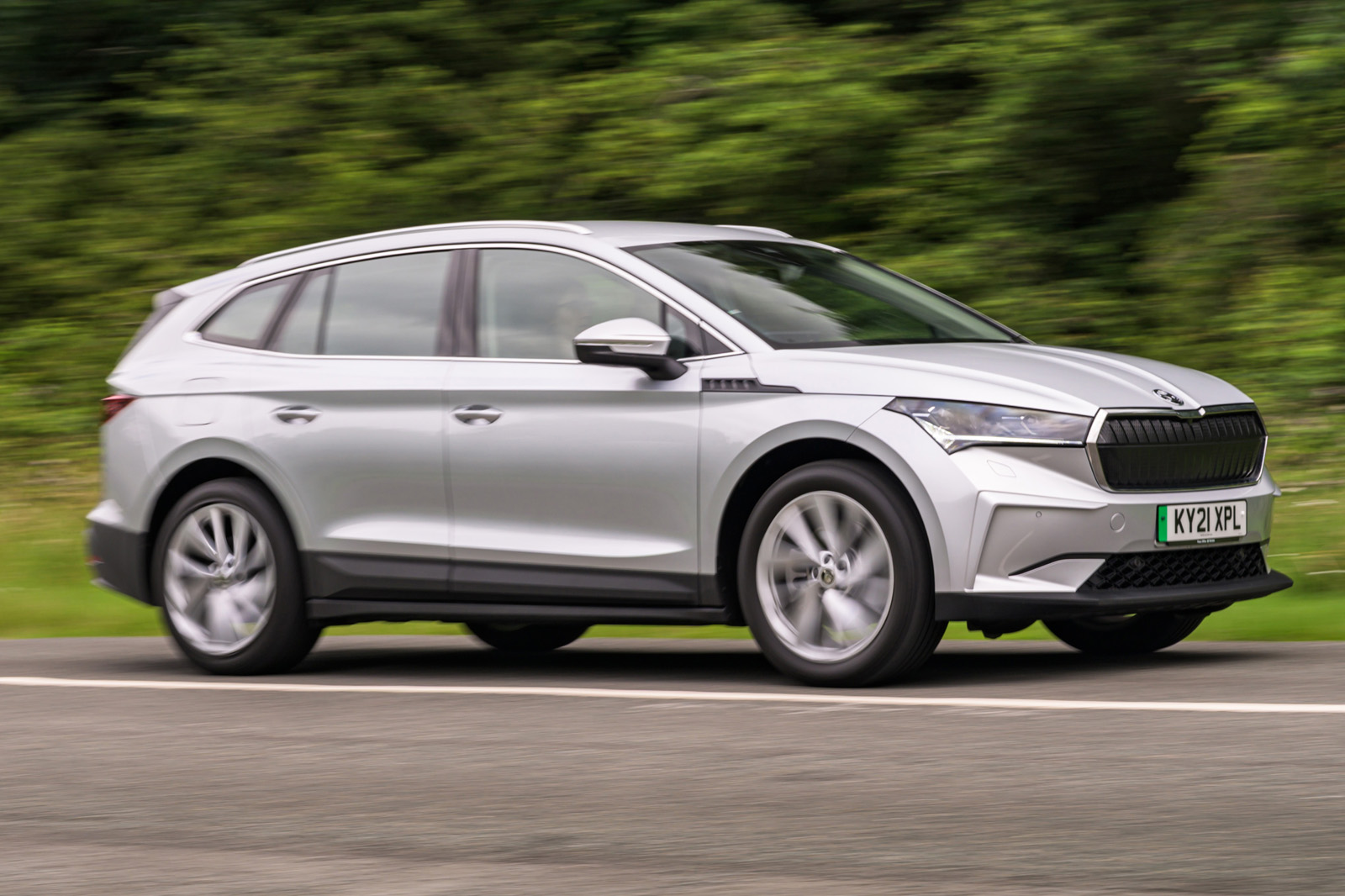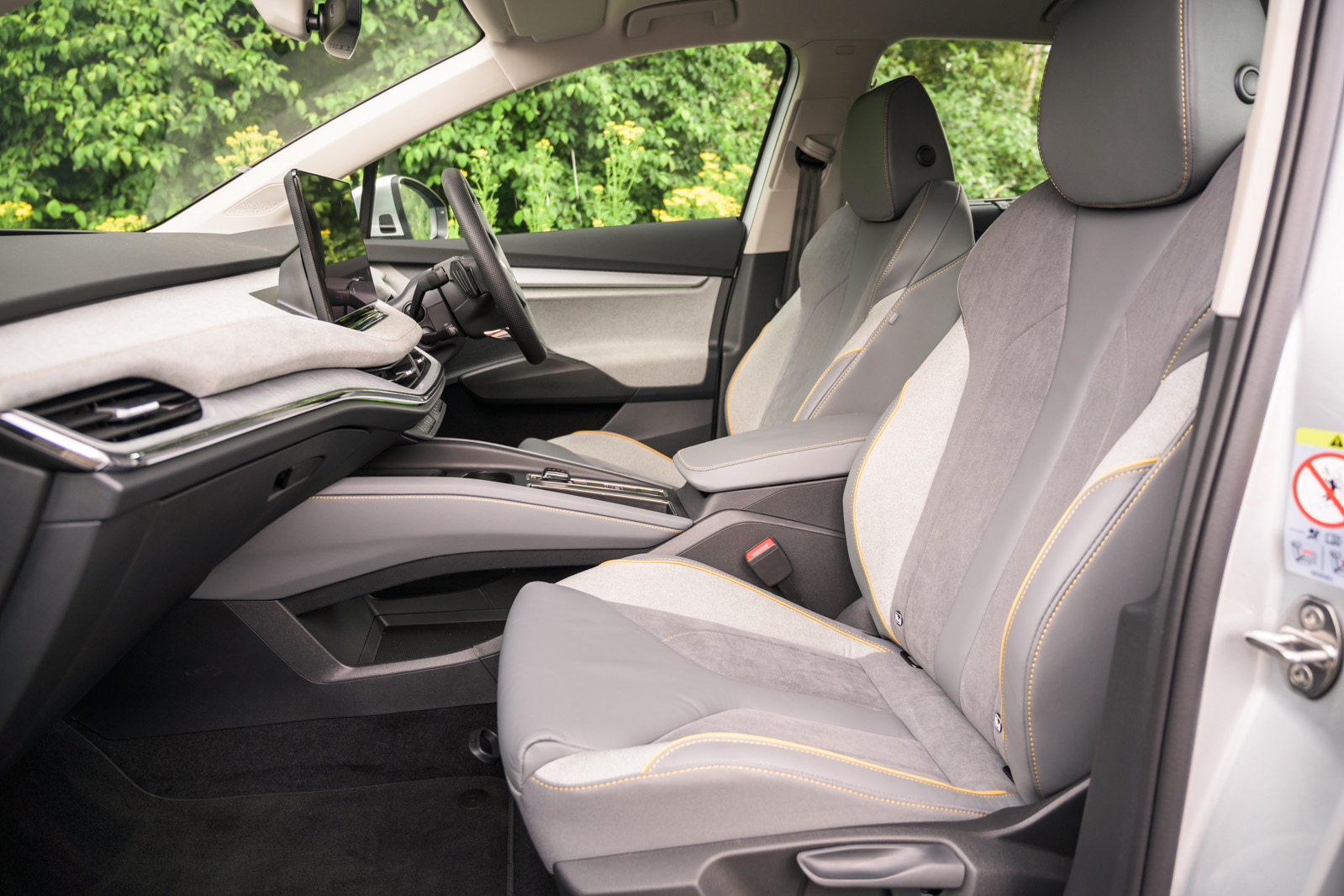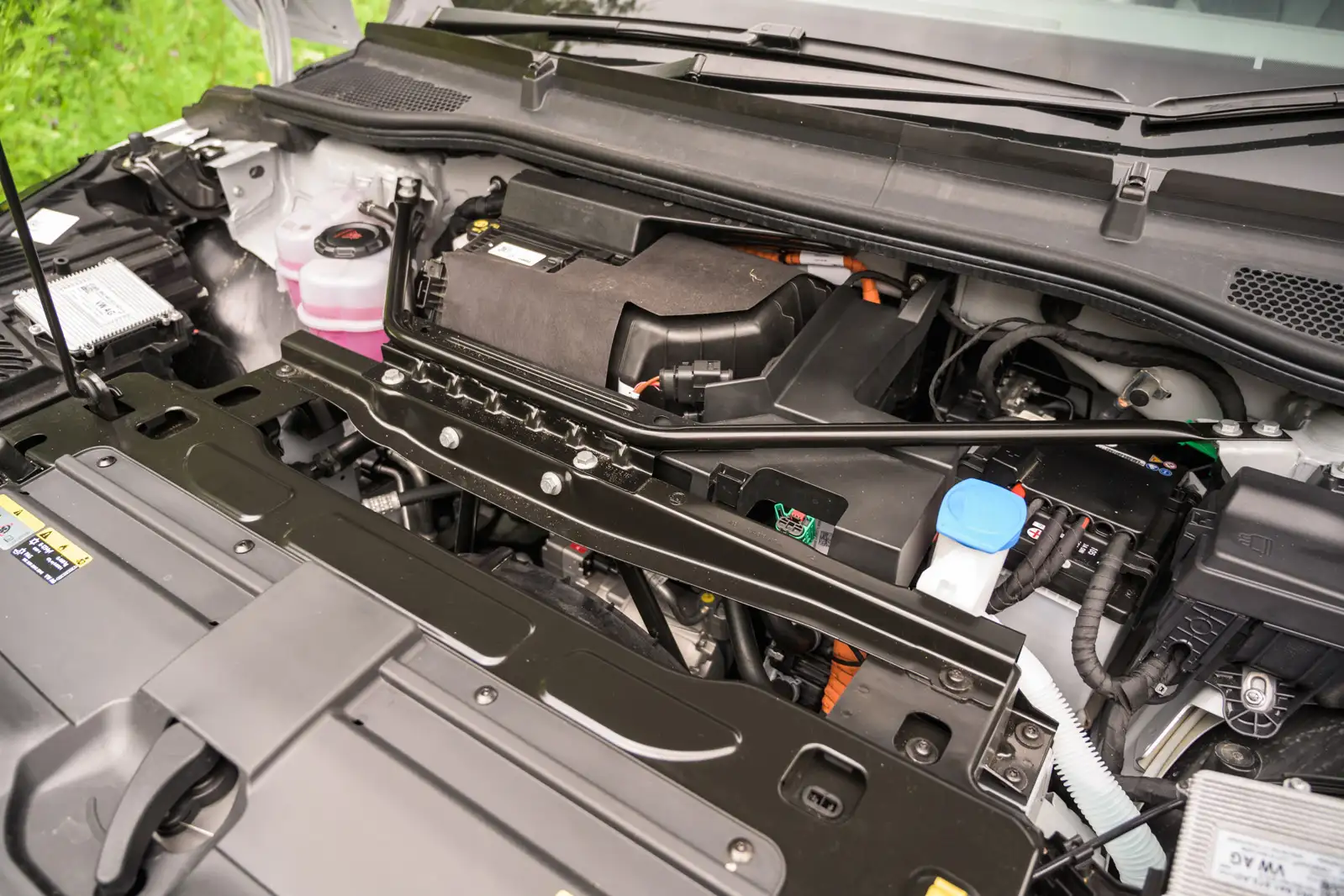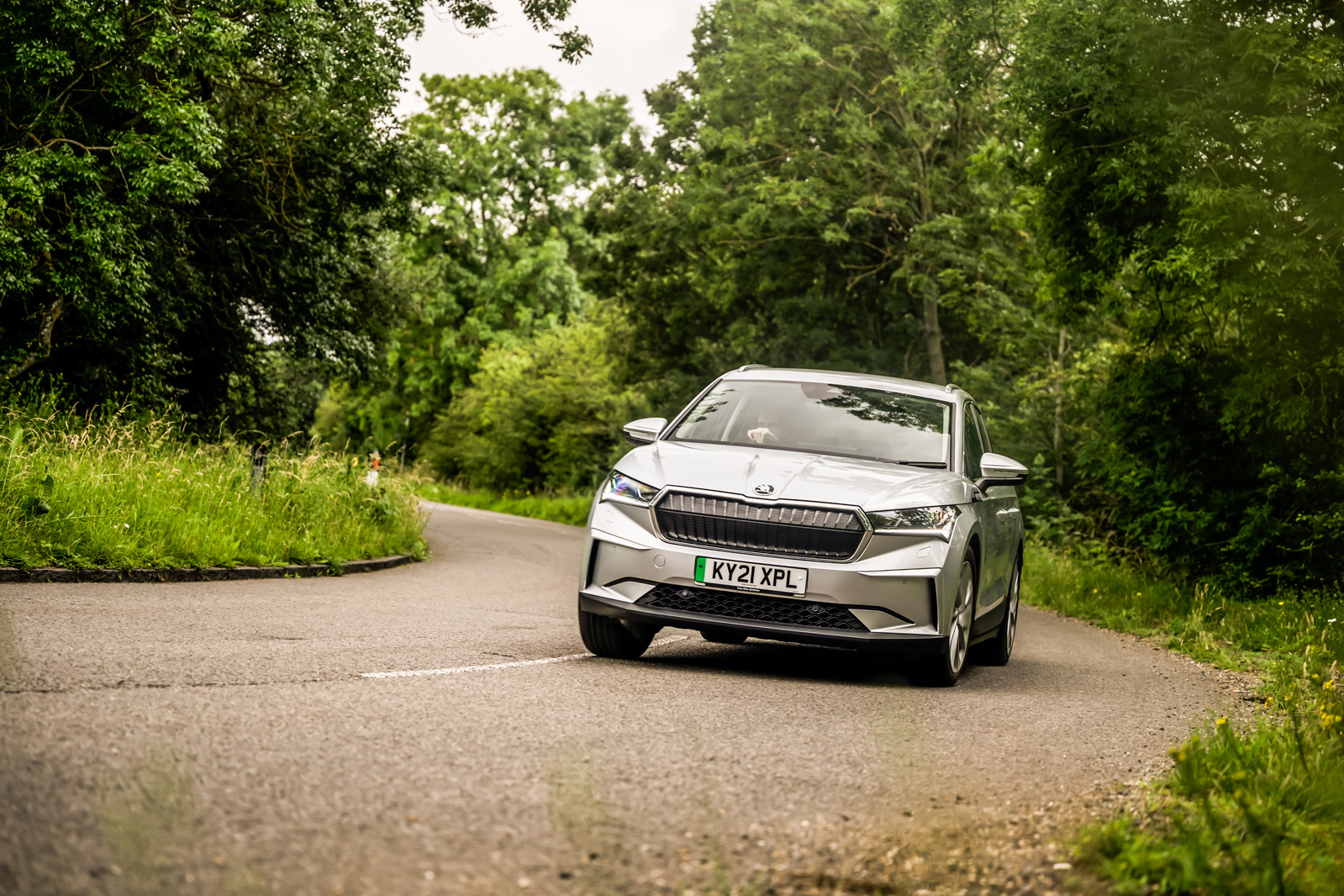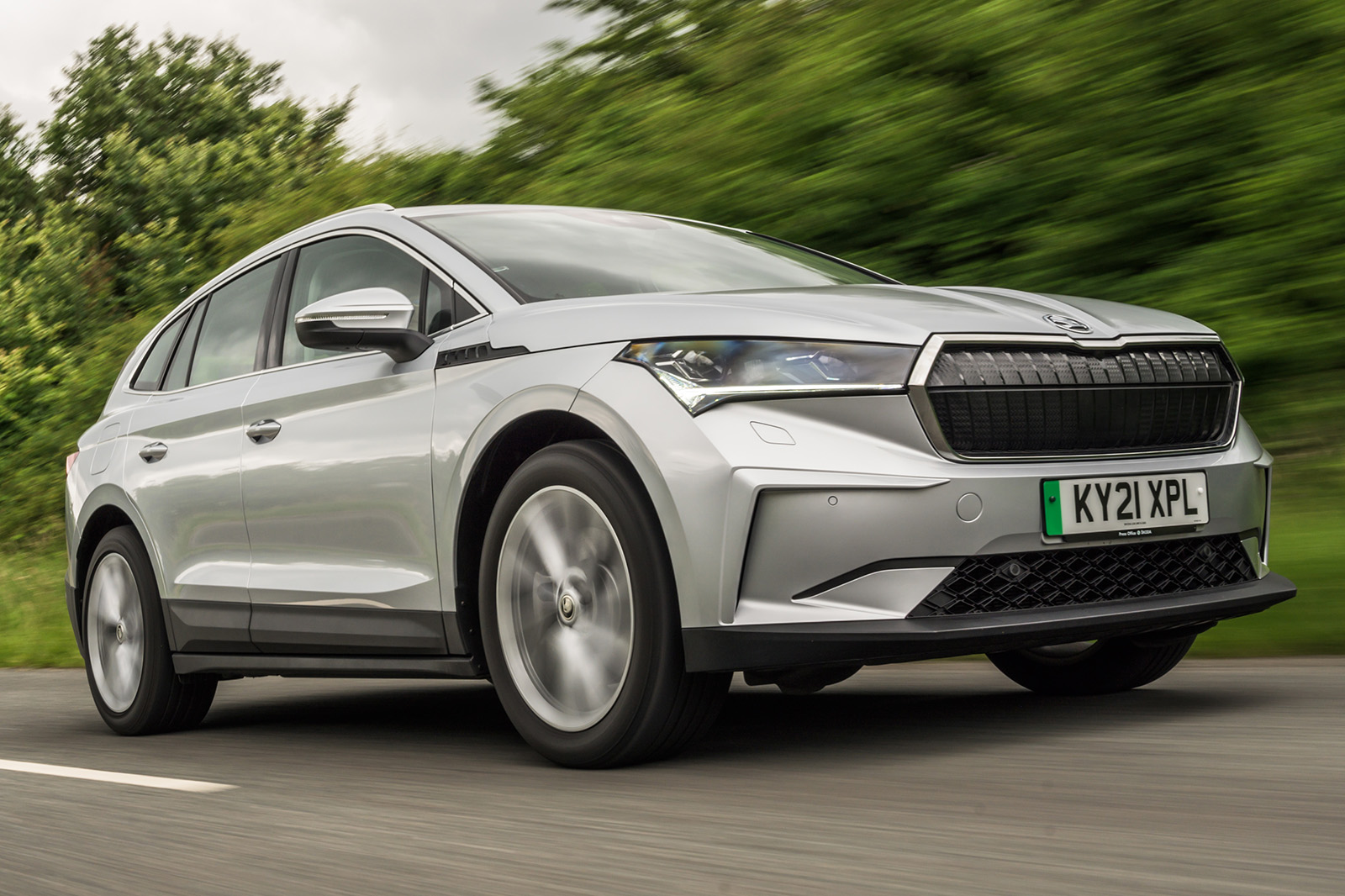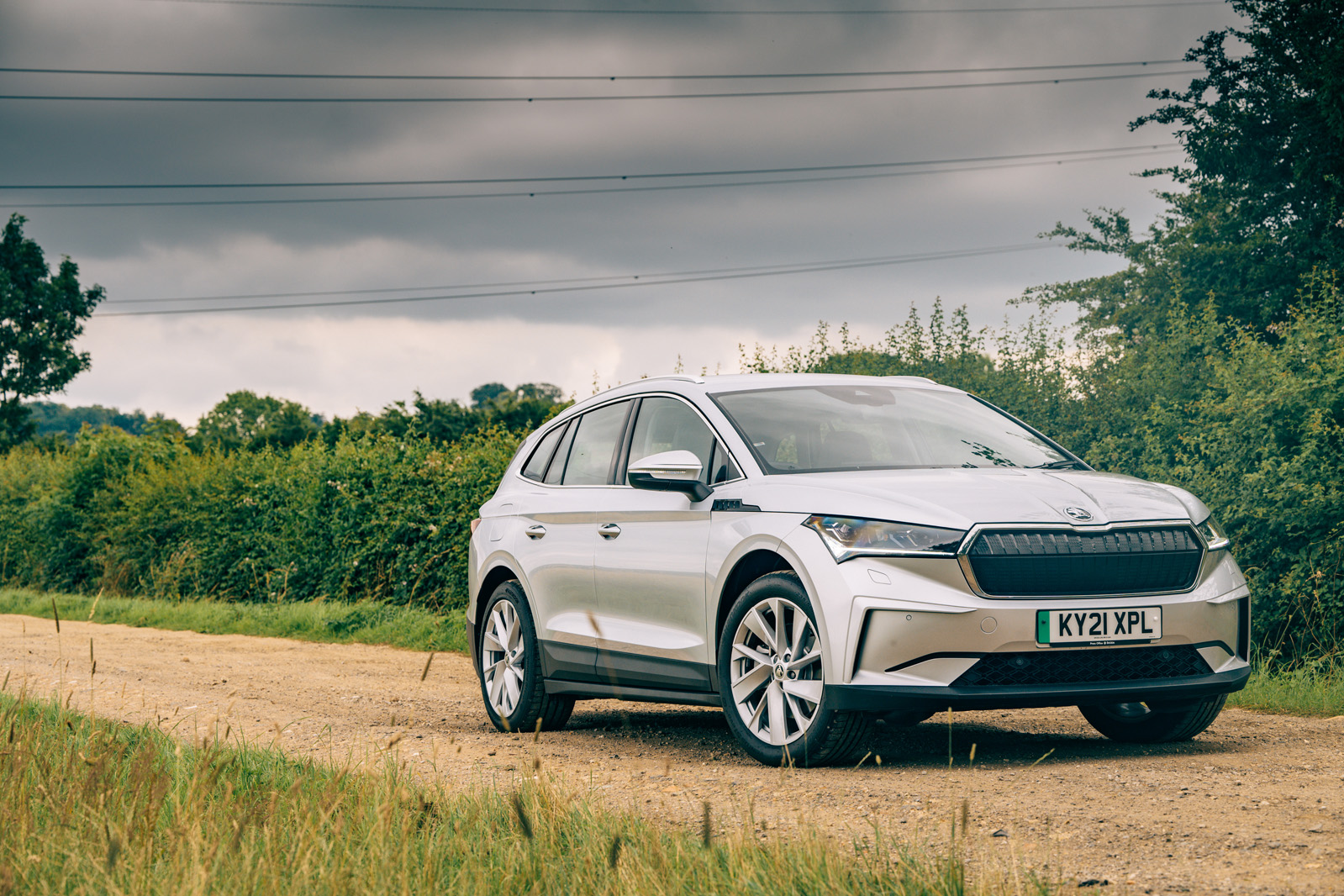The cab-forward proportions and long rear overhang pay dividends for the packaging of the Enyaq’s interior, resulting in a spacious-feeling cabin. While that impression was aided by our test car’s light grey upholstery, there can be no doubt that this is the most practical of all these first-generation, MEB-platform EVs.
How much of the space you can actually use does depend a little on which options you tick. There is ample room on the back seat, even in the middle, thanks to the absence of a centre tunnel. On the other hand, the optional and slightly flimsy tray tables steal a little leg room from taller adults, who won’t be able to stretch out in the back like they might in a Hyundai Ioniq 5. The 585-litre boot is fairly large for an EV with a drive motor underneath the floor, but Skoda makes you pay extra for a movable boot floor. Our car didn’t have it, so the load floor wasn’t totally flat when the rear seats were folded.
Enyaqs have a cubby beneath the boot floor to store the charge cable, but it’s not quite big enough to fit all the cables. Some EVs have storage under the bonnet for the same job, but while there is space for one in the Enyaq, Skoda hasn’t used it. Remembering to remove the charge cable from its home before filling the boot with cargo, then, will be a frequent challenge for Enyaq owners.
The cabin materials are a little plain in places, with some coarser plastics at lower levels and anodised-look trim strips up high that clearly feel like plastic. At least they resist fingerprints well, though, while generous use of a kind of synthetic fur-like textile makes for an inviting, lounge-like environment.
The front cabin is cleverly thought out – ‘simply clever’, Skoda might say. There are coinholders, a storage slot for car park tickets and a clip in the windscreen for parking tickets. There are two phone trays in the centre console that are angled away from the driver to avoid distraction and that will wirelessly charge your device if so optioned.
Despite technically having a flat floor, the car has a big centre console between the front occupants, but it has all sorts of big bins and trays all the way down to the floor for storage.
Skoda Enyaq iV infotainment and sat-nav
Although Skoda uses the same fundamental infotainment system as other Volkswagen Group brands, they all give it their own finishing touch – and Skoda’s execution is usually smoother and a bit easier to use. Such is the case here in the Enyaq. Precious few physical buttons grace the dashboard, but as the screen is massive, at 13.0in, that’s not an issue, and most important settings are relatively easy to find – although if you do struggle to work it out, don’t expect the voice activation to be of any help.
We got used to most of the system’s quirks over our week with the car, but there always remained certain baffling design features. The touch-sensitive slider for the volume is absurd, the screen displayed a ‘qi’ icon to indicate a phone is wirelessly charging even though our test didn’t even have wireless charging and, in a textbook case of form over function, you browse through settings by rotating a picture of the car.


